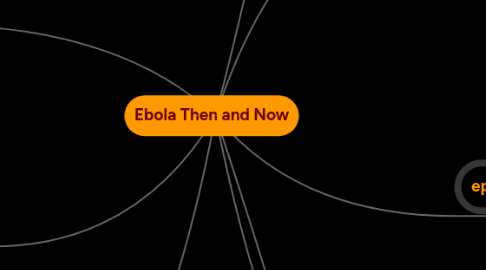
1. surveillance epidemiological
1.1. Ten four-person surveillance teams
1.1.1. led by a physician or nurse and trained in recognizing the features of EVD and other common diseases, interview techniques, patient isolation, and personal protection
1.2. visited 550 villages at least twice over a 2-month period; the 55 villages where Ebola was found were visited a third time
1.3. recognition
1.3.1. Patient identification was facilitated by the local tradition of shaving one's head when in mourning for a relative
2. Identify
2.1. Filovirus spp
2.2. virologic and immunologic test
2.3. electron micrographs
2.4. Who did???
2.5. International Commission for the Investigation and Control of Ebola Hemorrhagic Fever in Zaire
3. outbreak
3.1. Symptoms
3.2. unusually lethal hemmorrhagic
3.3. fever
3.4. Where???
3.5. Zaire
3.6. First patients
3.6.1. systemic illness resembling malaria, typhoid, Lassa fever, yellow fever, or influenza.
4. outbreaks before and now
4.1. 2013-2014
4.2. Ebola virus disease (EVD)
4.3. 1976
4.4. Zaire ebolavirus
5. safety equipment
5.1. surgical scrubs, gloves, goggles, paper gowns, masks, caps, and booties
6. how to avoid spread of the virus
6.1. We advised that bodies be covered with hypochlorite disinfectant (bleach)
6.2. wrapped in shrouds
6.3. and buried without the usual washing and prolonged contact with relatives and friends
6.4. Isolation huts and patients' garments were burned in many villages
6.5. outcomes
6.5.1. In November, moved to Yambuku, since transmission had stopped in Kinshasa
7. spread of the virus
7.1. 1977 in the 120-bed Yambuku Mission Hospital (YMH)
7.2. use of unsterilized syringes and needles
7.3. Five commission members went to the village of Yambuku almost immediately to define the geographic extent of the outbreak
7.4. Other members remained in Kinshasa to care for hospitalized patients, enforce surveillance and isolation of contacts, marshal resources, and assess options.
7.5. The government had quarantined the 275,000 people in Bumba Zone
7.5.1. Some patients had been placed in huts outside their villages — a common practice for isolating patients with smallpox
8. epidemiology
8.1. there were a total of 318 cases and 280 deaths
8.2. The virus spread only through injection with an unsterilized needle or very close and repeated patient contact
8.3. incubation period
8.3.1. 6 days among people infected through the common outpatient practice of intramuscular injection and 8 days among those infected through person-to-person contact (range, 1 to 21 days)

